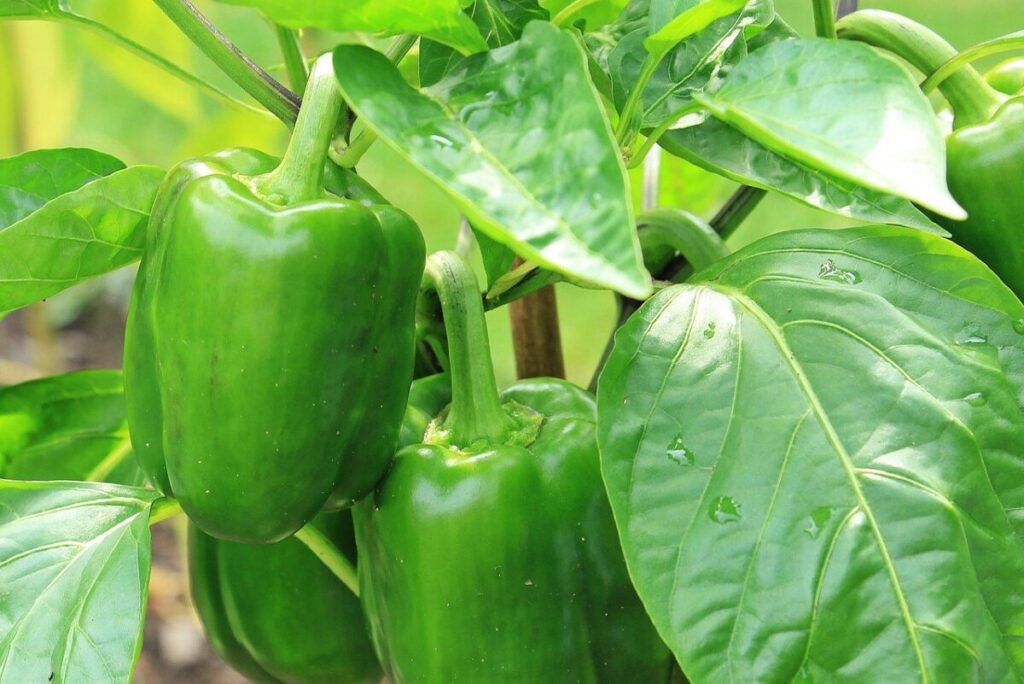With inflation raising the costs of various items, including food, growing your own is a great way to save money. Wondering what plant to add to your garden next? Why not try your hand at growing peppers!
Planting Peppers
When planting, it’s best to select plants that are healthy and anywhere from 4 to 6 inches tall. Plants should be placed 18 to 24 inches apart.
Remember, peppers will naturally grow upright; because of this, they will benefit from additional support. Staking plants with a stake or tomato cage will help keep any brittle branches from breaking when they start bearing fruit.

Soil
Peppers will grow in a variety of soils. However, they will do best in soil that is well-draining and in locations that receive at least 6 hours of sunlight a day.
To prepare your soil, make sure to break up the large clods by raking it, working the soil 8-10 inches deep. Try incorporating organic matter into the soil—this is especially important if the soil is a heavy clay.
For best results, grow them in soil with a pH between 6.2 and 7.0.
Watering
Make sure to water immediately after planting. Then, peppers should be watered regularly thought their growing season to prevent wilting.
Be sure to water the plants slowly to help the root system grow strong. It’s best to aim for 1 to 2 inches per week but expect the plants to need more water during hotter weather.
Common Pests And Diseases
Like with all plants, peppers have some common pests and diseases gardeners should keep an eye out for.
Common Pepper Pests
Some common pests to look out for include:
- Aphids
- Colorado Potato Beetle
- Cutworms
- Flea Beetles
- Pepper Weevil
Each of these pests has its own care and removal methods. Make sure to research how best to help your plants and follow instructions carefully.
Diseases That Could Plague Your Plants
Keep an eye out for leaf spots on the growing plants. These spots can indicate fungi or bacterial disease that needs treatment. Some of these diseases include:
- Anthracnose
- Mosaic Virus
- Pepper Leaf Spot
- Phytophthora Blight
- Verticillium Wilt
Just like different pests, these different diseases should be researched further before treating.
Harvesting Peppers
Try to harvest the peppers as they mature, this will allow for greater yields. Make sure to use pruning shears or a sharp knife to cut the fruit from the plants; leave a short stem attached.
Peppers should be ready for harvest anywhere from 8 to 10 weeks after planting. Bell peppers are mature when they become shiny, firm, and a dark green color.
When growing hot peppers, they will be ready for harvest when they turn a red or yellow color (depending on the variety of hot pepper).
Peppers should be used, dried, pickled, or frozen within 3 to 5 days after harvest.
And there you have it. So, what’re you waiting for? Get started on growing your own peppers now!
